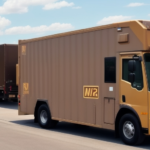Factors that Affect UPS Global Shipping Rates
Understanding the various elements that influence UPS global shipping rates is crucial for managing your shipping costs effectively. Here are the primary factors to consider:
- Distance: The distance between the sender and the recipient significantly impacts the shipping cost. Longer distances generally result in higher rates due to increased fuel consumption and labor costs.
- Package Weight and Dimensions: Heavier and larger packages require more resources to transport, leading to higher shipping fees. It's essential to optimize your packaging to reduce both weight and size.
- Shipping Speed: UPS offers various service levels, such as Express and Economy. Faster delivery options typically come at a premium cost.
- Mode of Transportation: UPS provides air, ground, and sea shipping options. Air transportation is faster but more expensive compared to ground shipping.
- Destination Country: Different countries have varying customs regulations and import taxes, which can affect the overall shipping cost.
- Customs and Duty Fees: These are additional charges levied by the destination country, based on the value and type of goods being shipped.
For a comprehensive overview of these factors, refer to the ShipScience guide on UPS shipping rates.
How to Calculate UPS Global Shipping Rates
Calculating UPS global shipping rates accurately is essential for budgeting and cost management. UPS offers several tools to assist with this:
- UPS Shipping Calculator: This online tool allows you to input package details, such as weight, dimensions, origin, and destination, to receive an instant shipping quote. Access the calculator here.
- Customs Tools: UPS provides resources to help you understand the customs regulations of the destination country, including potential duties and taxes. Visit the ShipScience customs resources for more information.
- Special Rates and Discounts: Businesses that ship frequently may qualify for discounted rates. Contact your UPS account representative to explore eligibility for these savings.
Incorporating these tools ensures that you account for all variables, providing a transparent and reliable estimate of your shipping costs.
Comparison of UPS Global Shipping Rates with Other Carriers
When evaluating UPS against other shipping carriers, consider the following aspects:
- Cost: While UPS may have higher rates compared to some competitors, it often justifies the price with superior reliability and extensive service options.
- Service Range: UPS offers a broad spectrum of services, including ground, air, and ocean freight, as well as specialized services like temperature-controlled shipping.
- Global Network: With operations in over 220 countries and territories, UPS provides a robust international shipping network, which can be advantageous for businesses with a global presence.
For a detailed comparison, consult the ShipScience comparison of UPS and other carriers.
Tips to Reduce Your UPS Global Shipping Costs
Implementing strategic measures can help minimize your UPS shipping expenses:
- Consolidate Shipments: Combining multiple packages into a single shipment can help you take advantage of volume discounts.
- Optimize Packaging: Use lightweight and compact packaging materials to reduce both weight and dimensional size.
- Accurate Measurements: Ensure that package weight and dimensions are measured accurately to avoid unexpected fees.
- Utilize UPS Tools: Leverage UPS's online tools for real-time rate comparisons, delivery estimates, and shipment tracking to make informed decisions.
Adopting these practices can lead to significant cost savings over time. Learn more about cost-saving strategies in our detailed blog post.
Understanding the Different Types of UPS Global Shipping Services
UPS provides a diverse range of shipping services tailored to meet various business needs:
- Express Services: Fast delivery options for urgent shipments, typically arriving within 1-3 business days.
- Standard Services: More economical options for less time-sensitive deliveries.
- Economy Services: The most cost-effective shipping method, suitable for non-urgent shipments.
- Specialized Services: Including temperature-controlled shipping for perishable items, hazardous materials handling, and customized packaging solutions.
Each service level offers unique benefits, allowing businesses to choose the most appropriate option based on their specific requirements. Explore all service offerings on the ShipScience UPS services page.
How to Choose the Right UPS Global Shipping Service for Your Business
Selecting the appropriate UPS shipping service involves evaluating several key factors:
- Budget and Timeline: Determine whether speed or cost is your priority. For urgent deliveries, express services may be necessary, while standard or economy options can save money for non-urgent shipments.
- Package Characteristics: Consider the size, weight, and nature of your package. Specialized services may be required for delicate or regulated items.
- Destination Regulations: Research the destination country's import regulations and restrictions to ensure compliance and avoid delays.
- Customer Support: Assess the level of support you may need. UPS offers various support options, including dedicated account managers for high-volume shippers.
For guidance on selecting the best shipping service, refer to our comprehensive guide.
The Impact of Distance on UPS Global Shipping Rates
Distance is a fundamental factor influencing UPS global shipping rates. The farther a package must travel, the higher the shipping costs due to increased fuel usage and transit time. For example, shipping a package from New York to London will generally cost more than shipping within North America.
Additionally, longer distances may involve more complex logistics and handling, further contributing to the cost. To manage expenses, businesses can consider regional distribution centers to minimize shipping distances for frequent destinations.
According to UPS's 2023 shipping report, average shipping costs can increase by approximately 15% per 1,000 kilometers beyond a base rate, highlighting the importance of strategic planning in international shipping.
The Impact of Package Weight and Size on UPS Global Shipping Rates
Package weight and dimensions are critical determinants of UPS global shipping rates. UPS employs a dimensional weight pricing model, which calculates shipping costs based on the package's volume rather than just its actual weight. This means that large, lightweight packages may cost more to ship than smaller, heavier ones.
To optimize shipping costs:
- Use Efficient Packaging: Select packaging that snugly fits the contents to reduce dimensional weight.
- Choose the Right Materials: Utilize lightweight materials where possible to lower both weight and dimensional factors.
- Accurate Measurements: Ensure precise measurement of both weight and dimensions to avoid overcharges.
For detailed information on UPS's dimensional weight pricing, visit the shipscience dimensional weight guide.
How to Negotiate Better UPS Global Shipping Rates for Your Business
Businesses that ship frequently with UPS may have the opportunity to negotiate more favorable rates. Here are steps to take:
- Assess Your Shipping Volume: Higher shipping volumes provide leverage for negotiating discounts.
- Establish a Relationship: Building a rapport with your UPS account manager can facilitate discussions around rate reductions.
- Commit to a Contract: Long-term shipping commitments can lead to better pricing tiers.
- Review Service Levels: Ensure you’re utilizing the most cost-effective services that meet your delivery requirements.
For assistance with negotiating rates, contact your UPS representative or visit our contact page.
Common Mistakes to Avoid While Using UPS Global Shipping Services
Avoiding common pitfalls can enhance your shipping experience and reduce unforeseen costs:
- Inaccurate Measurements: Always verify the weight and dimensions of your package to prevent additional fees.
- Incorrect Customs Declarations: Ensure all customs forms are filled out accurately to avoid delays or fines.
- Insufficient Packaging: Use durable packaging materials to protect your shipment during transit.
- Lack of Tracking: Utilize UPS’s tracking tools to monitor your shipment and address issues promptly.
Learn more about avoiding shipping mistakes in our in-depth blog post.
How to Track Your Packages During Transit Using UPS Global Shipping Services
Effective package tracking is essential for maintaining oversight of your shipments. UPS offers a variety of tracking tools to help you stay informed:
- UPS Tracking: Access real-time updates on your package’s location and status through the ShipScience UPS tracking tool.
- Delivery Notifications: Sign up for email or SMS alerts to receive notifications about your package’s progress and delivery confirmation.
- Mobile App: Use the UPS mobile app to track shipments on the go, ensuring you’re always informed.
- Dashboard Integration: For businesses, integrate UPS tracking into your own dashboard for streamlined monitoring.
Utilizing these tracking options can enhance your shipping management and provide peace of mind.
The Role of Customs and Duty Fees in UPS Global Shipping Rates
When shipping internationally, customs and duty fees are additional costs imposed by the destination country. These fees are based on the package's value, type of goods, and the country's import regulations.
- Customs Duties: Taxes levied on imported goods, varying by country and product category.
- Import Taxes: Additional charges that may apply based on the destination country's tax policies.
- Handling Fees: Charges by UPS for processing customs clearance and documentation.
To manage these costs:
- Research Destination Regulations: Understand the specific import requirements and restrictions of the destination country.
- Accurate Valuation: Declare the accurate value of the goods to avoid penalties and ensure proper duty calculation.
- Use Duty Paid (DDP): Consider DDP shipping terms where you, as the sender, prepay all duties and taxes, simplifying the process for the recipient.
For detailed guidance on customs and duty fees, visit the ShipScience customs guide.
Understanding the Insurance Policies Offered by UPS for Your Shipment
UPS provides insurance options to protect your shipments against potential risks. Understanding these policies is vital for safeguarding your goods:
- Declared Value: UPS allows you to declare a value for your shipment, ensuring coverage up to that amount in case of loss or damage.
- Additional Insurance: For high-value items, additional insurance can be purchased to extend coverage beyond the standard declared value.
- Specialized Coverage: Certain goods may require specialized insurance, such as electronics, jewelry, or perishable items.
To select the appropriate insurance:
- Assess Value: Determine the total value of the items being shipped to ensure adequate coverage.
- Evaluate Risks: Consider the potential risks during transit and choose coverage that mitigates those risks.
- Review Policy Details: Understand the terms and conditions of the insurance policy, including coverage limits and exclusions.
For more information on UPS insurance options, consult the ShipScience insurance guide or contact your UPS representative.
How to Resolve Disputes with UPS Regarding Damaged or Lost Shipments
Despite UPS's reliability, issues such as lost or damaged shipments can occur. Here's how to effectively handle such disputes:
- Document the Issue: Take photos of the damaged package and retain all shipping documents as evidence.
- Notify UPS Promptly: Report the issue within the specified time frame, typically within 60 days for lost packages and within a shorter period for damaged ones.
- Submit a Claim: File a claim through the UPS website or by contacting customer service, providing all necessary documentation.
- Follow Up: Keep track of your claim’s progress and maintain communication with UPS representatives until resolution.
UPS has established procedures to address these issues, aiming to provide fair compensation and improve future service reliability. For detailed instructions on filing a claim, visit the ShipScience claims process guide.
In conclusion, comprehensively understanding UPS global shipping rates and the factors that influence them allows businesses and individuals to manage their shipping strategies effectively. By leveraging UPS's tools and resources, optimizing packaging, and staying informed about customs regulations, you can ensure that your shipments are both cost-effective and reliable.






















